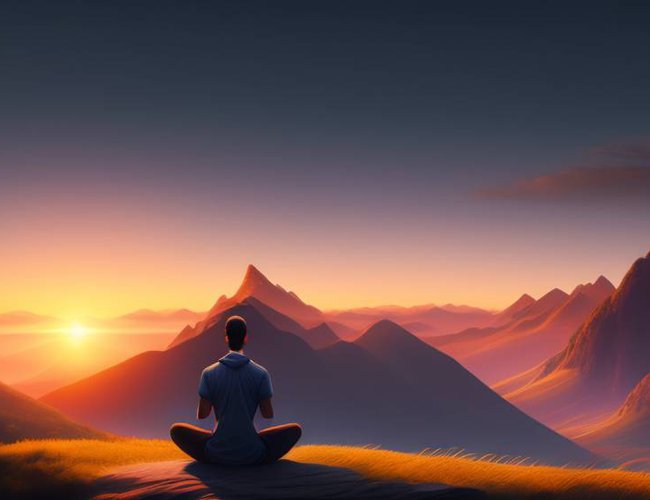
I attended a 10 day Vipassana meditation course at Nepal Vipassana Center Dharmashringa, Kathmandu under the guidance of conducting teacher T. Bhakta Prasad Paudel and other four Assistant Teachers.
Vipassana is a meditation technique rediscovered by Gautam Buddha some 2600 years ago. A day before the 10 day meditation started I was a bit nervous. I had heard how difficult it would be for ten days. The new students (sadhaks) had to practice Panchsheel, five precepts , while the repeating old sadhaks were asked to observe three more making it Ashtasheel, the eight precepts. The five precepts (codes of conduct) were no killing, no stealing, observing celibacy, no lying and no intoxication. Everyone was also asked to observe Noble Silence (Arya Maun). It meant no talking with fellow sadhaks under any circumstances. It meant not communicating with sign languages or in any other form as well. We were expected to observe Noble Silence for 10 days. It had its benefits while meditating. It mitigated distractions which was very helpful during meditation. Only on the 10th day were we released from the nobel silence. . After a 10 day in seclusion we were preparing to face the outer world. However, we could talk with dharma sewaks (volunteers) and Acharyas as per necessity during the course.
For the first three days we were asked to do Anapana meditation. We would observe natural breathing. We would witness each inhaling and each exhaling phenomena with awareness. This Anapana technique is also called Samadhi which helps to develop wisdom (pragya). By the third day our concentration was to remain limited to the triangular area between the opening of the nose and above the upper part of the lip. We were told if we give space to mind it would take more of it. Therefore, concentrating our minds to a limited area was important.
On the fourth day we were taught Vipassana. It was the beginning of an inward journey. The concentrated mind was to observe each part of the body moving from the top of the head to the heels, to the toes and the fingers of the feet. We were asked to witness the sensations with equanimity. In order to free the mind of rag (good feelings) or dwesh (bad feelings) being equanimous was essential. We were not to get disappointed by bad feelings or be happy about the good feelings while witnessing the sensations in each part of the body. This observing of sensations we did repeatedly from head to feet and from feet to the top of the head. There were subtle sensations like the touch of the clothes and the touch of the light breeze, to gross sensations like severe pain in the body. We were to observe equanimously and do nothing more. This would give us wisdom (pragya).
We would realize that the subtle sensations and the gross sensations were ever changing. They were not permanent. At this initial stage we were given a glimpse of the nonexistence of “self” or “I”. Because the pain was there for sometime and not at other times, and again it was there and again it wasn’t, it kept birthing and dying. We could infer the same with all parts of the body. This also was true of each subatomic particle that made our body. Whatever, kept birthing and dying could not be associated as “I”. It was ever changing, ever becoming. However, we would have to experience it first hand to verify it. For that, regular practice of Vipassana was important. To make our mind subtle so that it would feel all the sensations in the body, the practice of Vipassana was important.
The fountain of wisdom (pragya) would burst through with the proper practice of Vispassana. Wisdom would guide us to a proper path and at the end truth would be experienced. Being equanimous while observing sensations would not create new attachments to the mind and the old ones would burn out eventually freeing the mind of any bikar (attachments).
There was another aspect to it. We were to sit like a rock (Adisthana) in our chosen asan (posture). Every one hour group meditation session required sadhaks to observe Adisthana from the middle of the course.
The experience would have been impossible if the dharma sewaks (volunteers) did not attend to all our needs. Before our waking up hours till the time we went to bed they were in our service. Before we asked, they would provide them. From feeding us to bringing umbrellas when it rained there were dharma sewaks. The infrastructure was well suited for meditation at the foothills adjacent to the Shivapuri National Park. There was no vehicular noise. We could use all the facilities because of the generous donation given by earlier sadhaks.
This is what the schedule looked like. The morning bell rang at 4am. By 4:30am everyone gathered at the Dhamma Hall to meditate. From 6:30am to 8am breakfast was served. From 8am to 9am group meditation was conducted in the Dhamma Hall. From 9am to 11am meditation was done either in the Dhamma Hall or at the residence according to Acharya’s instructions. From 11am to noon lunch was served. 12pm to 1pm was a rest break. During this hour Acharyas also entertained questions of sadhaks. 1pm to 2:30pm was a meditation session. 2:30pm to 3:30pm was a group meditating session. 3:30pm to 5pm was a meditation session either done at the Dhamma Hall or at the residence according to Acharya’s instructions. 5pm to 6pm was a snack break. Last light snack for the day was served. 6pm to 7pm group meditation session was done at the Dhamma Hall. 7pm to 8:30pm Shri S.N. Goenka’s discourse for the day was screened. 8:30pm to 9pm meditation was done. 9pm to 9:30pm sadhaks’ queries were entertained. 9:30pm lights were turned off to take a rest in the night.
With every passing night a new morning dawned and there was so much meditation to do.

Abhishekh Adhikari
Adhikari is an advocate
- Glorious Eastern Nepal
- Sep 10, 2024
- Once Again A Trip To Poonhill
- Mar 18, 2024
- A Trek To The Lesser Trodden Ruby Valley
- Mar 28, 2022
- A Complete Trip, Personally
- Jan 26, 2020
- Mesmerizing Mountains: Machhapuchure, Annapurna South and Himchuli
- Apr 18, 2019












